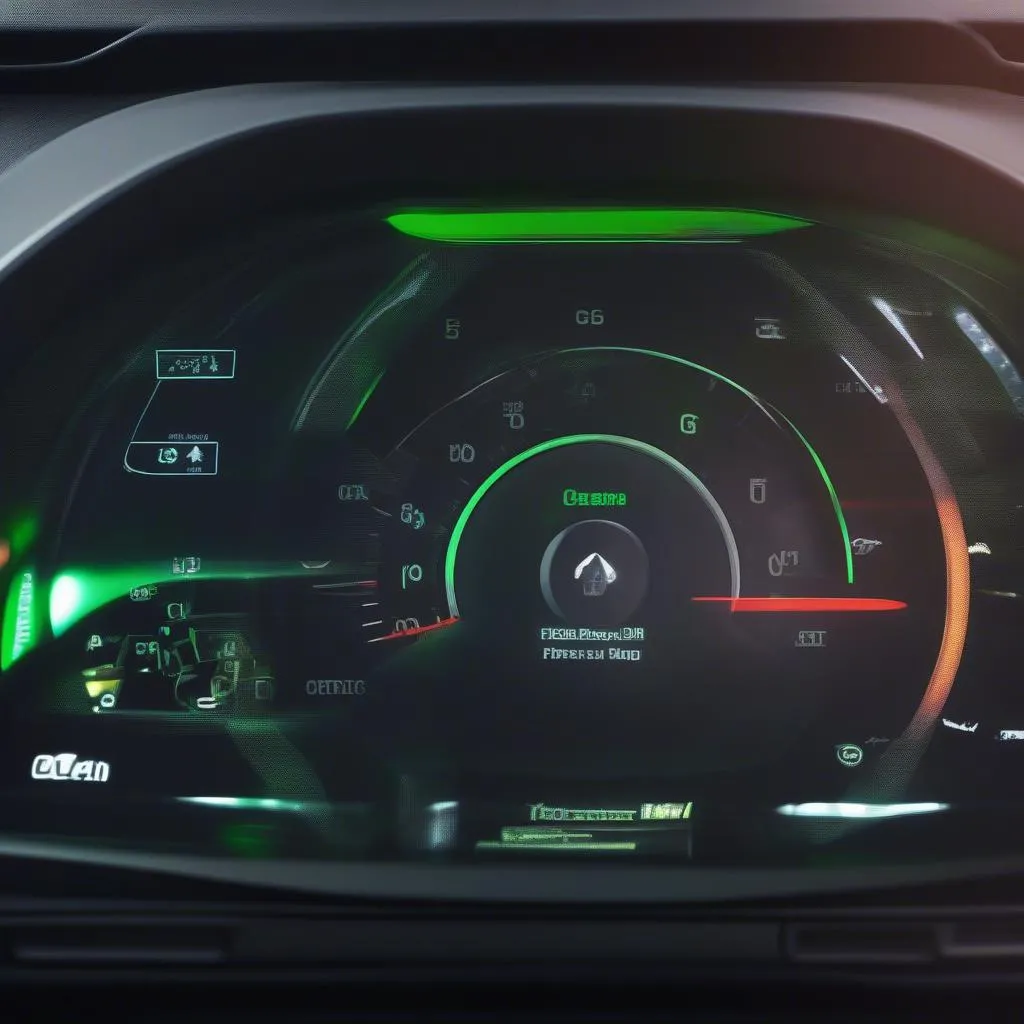The brake warning light on your 2007 BMW 328i is an essential safety feature. When illuminated, it signals a potential issue with your braking system that requires immediate attention. While it could be as simple as worn brake pads, ignoring the warning light could lead to more serious and costly problems. This comprehensive guide will walk you through the common causes of a brake warning light in a 2007 BMW 328i, how to diagnose the problem, and the potential solutions, including resetting the light.
Understanding Your BMW’s Brake Warning Light
Your BMW 328i uses sensors to monitor various components of the braking system. When a sensor detects an anomaly, it triggers the brake warning light on your dashboard. This light usually appears as a circle with an exclamation mark (!) inside, often accompanied by the word “BRAKE.”
Common Causes of a Brake Warning Light
There are several reasons why the brake warning light might illuminate on your 2007 BMW 328i. These include:
-
Worn Brake Pads: This is the most frequent culprit. Brake pads have wear indicators that make a squealing noise when they become too thin, alerting you to replace them. If ignored, the brake warning light will illuminate.
-
Low Brake Fluid Level: Your BMW’s braking system relies on hydraulic pressure from brake fluid to function correctly. A leak in the system or simply low fluid levels can trigger the warning light.
-
Faulty Brake Sensor: Like any sensor, your brake pad wear sensors can malfunction. A faulty sensor can send a false signal, illuminating the warning light even if your brake pads are in good condition.
-
ABS Issues: The Anti-lock Braking System (ABS) is a crucial safety component. A problem with your ABS module or wheel speed sensors can trigger the brake warning light, often accompanied by the ABS warning light.
Diagnosing the Problem
Before attempting to reset the brake warning light, it’s crucial to identify the root cause. Here’s a step-by-step approach:
-
Check the Brake Fluid Level: Open the hood and locate the brake fluid reservoir. Ensure the fluid level is between the minimum and maximum marks. If it’s low, add the correct type of brake fluid recommended for your BMW 328i.
-
Inspect the Brake Pads: Visually examine the brake pads through the spaces between the wheel spokes. If the pads are worn thin (less than 1/4 inch), they need replacing.
-
Scan for Trouble Codes: Using an OBD-II scanner, you can read any stored trouble codes in your car’s computer. This can help pinpoint the exact problem, such as a faulty sensor or ABS issue.
Resetting the Brake Warning Light
Once you’ve addressed the underlying issue, you can attempt to reset the brake warning light. There are two main methods:
Method 1: Driving Reset:
- Start your BMW 328i and let it idle for a minute.
- Drive the car at a moderate speed (25-35 mph) for a short distance.
- Apply the brakes firmly a few times.
- The brake warning light should turn off if the problem has been resolved.
Method 2: Manual Reset Using an OBD-II Scanner:
- Connect an OBD-II scanner to your car’s diagnostic port (usually located under the dashboard on the driver’s side).
- Turn on the ignition but don’t start the engine.
- Access the “Brake System” or “ABS” module on the scanner.
- Select “Clear Codes” or “Reset” to clear the brake warning light.
When to Seek Professional Help
While simple fixes like replacing brake pads and adding brake fluid can be done at home, more complex issues require professional expertise. If you are uncomfortable working on your car’s braking system or the brake warning light persists after troubleshooting, it’s best to consult a qualified mechanic or BMW dealership.
Conclusion
A glowing brake warning light in your 2007 BMW 328i should never be ignored. By understanding the common causes, performing basic checks, and knowing how to reset the light, you can ensure your braking system remains in optimal condition, keeping you safe on the road. However, always prioritize safety and seek professional assistance when necessary.


